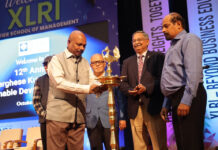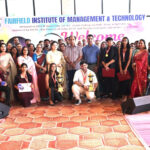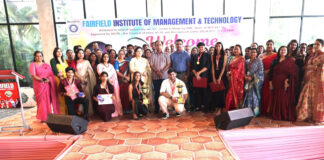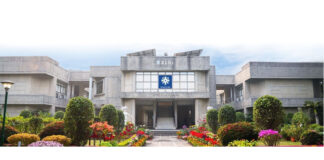In interior design, materials are not mere elements — they are the vocabulary spaces use to communicate. The texture of a wall, the sheen of a handle, the feel of wood, each is imbued with meaning, mood, and purpose. Understanding the significance of this, the JD School of Design, Bangalore, Department of Interior Design, is organising the much-awaited Material Expo 2025 — an academic and industry-relevant program that embodies the material spirit and its skill as transformers of interior space.
A Hands-On Learning Experience
The Material Expo 2025 is not only an event — it’s a classroom. Crafted to bring theory and practice together, the event offers students a chance to close the gap between textbook and experience by getting in touch with the materials firsthand.
Every student volunteer will both be curator and designer, building his or her exhibit around a chosen theme or application. From fastenings in hardware and lighting fixtures to construction materials, fittings of plumbing, and surface treatments, the exhibits will illustrate an innate understanding of how design decisions are informed by the characteristics of every material.
What sets the expo apart is the student curation. It’s not sheen polish but process — how emerging designers come to know texture, sustainability, and functionality in design. Every presentation is a story of exploration, of learning, and a growing sense of sensitivity towards how material impacts the environments that we inhabit and work in.
The On-Site Insight Program: Learning from the Source
Among the showpieces of this year’s expo is the On-Site Insight Program, an in-the-field program that transports students out of the classroom and into the world. Using guided tours of manufacturing plants, sourcing hubs, and material showrooms, students witness the evolution of raw materials into the final products that ultimately define interiors.
It is during these visits that students get a first-hand feel of innovation, the process of manufacturing, and trends in the market — a total understanding of what it takes to reach application and make choices of materials. It is this hands-on exposure that makes them appreciate not just aesthetics but also durability, availability, and sustainability — essentials that form the foundation of modern-day design thinking.
Collaboration Between Academia and Industry
In keeping with JD School of Design’s philosophy of “Design Education for Real-World Readiness,” the Material Expo 2025 encompasses academia and industry within the same premises. Industry professionals, architects, material technologists, and design faculty will engage with student exhibitors, critiquing their work and providing feedback.
This discussion between students and professionals guarantees that the students are not only demonstrating, but learning real-time knowledge on upcoming trends — from energy-efficient systems and smart materials to sustainable building techniques.
According to one faculty member, “Knowing materials is the key to design. When students work with them directly, they don’t only learn to design — they learn to think like designers.”
Sustainability and Innovation at its Core
One of the core themes in the expo is sustainability — an increasingly popular theme in contemporary interior design. Through their meticulously designed exhibits, students are encouraged to explore materials that not only incorporate ecological sustainability, local procurement, and ethical production but also are significantly innovative.
Whether they are showcasing bamboo composites, recycled glass, or waste-reducing modular fittings, the expo is a canvas of sustainable ingenuity. The tactile nature of the exhibits allows one to touch, feel, and experience materials — a sensory learning made concrete.
Moulding the Designers of the Future
Activities such as the Material Expo 2025 reaffirmed JD School of Design’s commitment to making industry-ready professionals who can marry creativity with relevance. For the students, it’s a podium for confidence and exposure — an opportunity to present their learning journey to the face of mentors and professionals who can chart their way ahead.
In addition to the intellectual value, the expo promotes teamwork, collaboration, and communication — qualities as valuable for a design career. It created an environment that encourages imagination, curiosity, and capability, where every exhibition echoes the thrill of an up-and-coming designer discovering his or her own voice.
As the campus becomes a living design laboratory, the Material Expo 2025 storytelling and design thinking session. For JD School of Design, it’s rekindling its passion for learning beyond textbooks.
For students, it’s a benchmark — a concrete reminder that each texture they select, each surface they touch, and each material they test has the power to define the spaces of tomorrow.












